How to fertilize geranium for abundant flowering and growth?
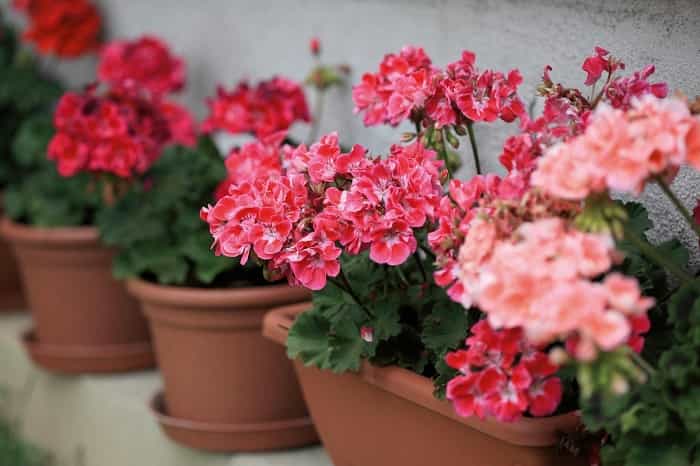
Contents:
- Signs of nutrient deficiency
- How to fertilize geraniums
- Fertilizers for geranium seedlings
- How to feed geraniums so that the leaves do not turn yellow
- How to fertilize geraniums for abundant flowering
- What else can you feed the plant during flowering
- Seasonal fertilizing of geraniums
- Timing and dosage
Geranium (pelargonium) is one of the most famous and popular perennial indoor plants. Its bright flowers delight with lush inflorescences and have a tart aroma. However, for lush flowering, you need to provide the plant with proper care and create favorable conditions, regardless of whether you grow it in open ground at your dacha or at home. The article contains proven information on how to feed geranium at different stages of its development and how to protect it from diseases and pests.
Signs of nutrient deficiency
Nutritional deficiency is determined by the appearance of the flower:
- the plant often gets sick due to weakened immunity, is affected by root rot, late blight, rust;
- the leaves become wilted and pale;
- no budding;
- plant growth slows down.
How to fertilize geraniums
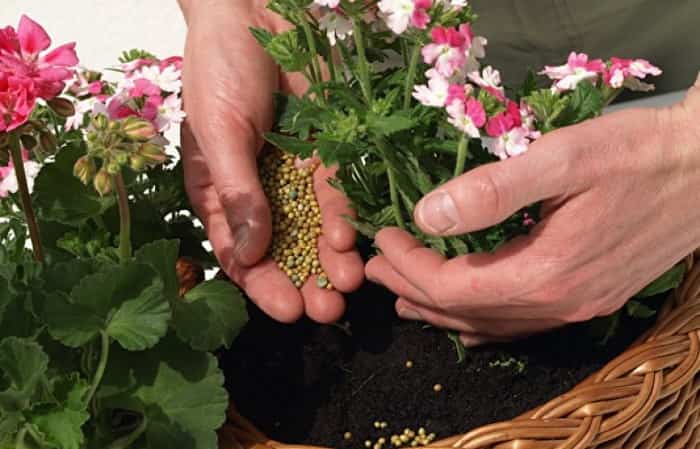
Those who use the preparations correctly and strictly observe the proportions achieve stable flowering of indoor and outdoor plants. The choice of a specific fertilizer for geranium depends on the growing conditions – outdoors in summer or indoors all year round. For example, not everyone is ready to use organic fertilizers (manure or bird droppings) in apartment conditions, while this option is quite suitable for fertilizing flower beds or soil in pots standing on the terrace.
Fertilizers for geranium seedlings
The first feeding is carried out 18 days after planting the seedlings. At this time, it is important to stimulate the growth of the plant. If you feed the geranium with nitrogen, the plant will form healthy roots, and the green mass will become much more lush. One of the well-proven options is the active biohumus “Planta”. The preparation is applied weekly before transplanting the geranium to a permanent place. Preliminary picking is carried out, and immediately before planting, the soil is treated with “Kemira” or ammonium nitrate.
How to feed geraniums so that the leaves do not turn yellow
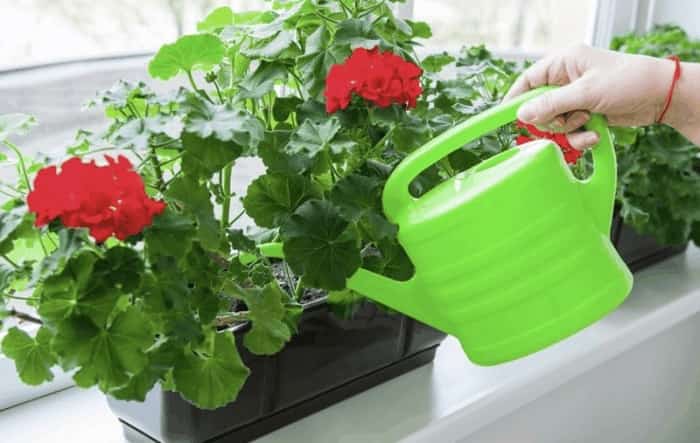
Changes in the shape and shade of leaves indicate problems. For example, yellowing of leaves may indicate a deficiency of phosphorus and potassium. If only the lower leaves turn yellow, there is a lack of zinc and magnesium. Dried tops indicate a lack of calcium and manganese.
The drug “Agricola” will help solve the problem of nutritional deficiency, as well as prevent pest attacks and the development of diseases. It contains all the necessary components for geranium. The drug is diluted strictly according to the instructions and applied in the way recommended by the manufacturer.
How to fertilize geraniums for abundant flowering
Fertilizing geraniums for abundant flowering is possible with both dry and liquid compositions. Budding is promoted by the use of phosphate, nitrate and potassium preparations. Whatever you use, it is important to strictly follow the manufacturer’s recommendations regarding dosages so as not to harm the plant.
In addition to store-bought preparations, proven folk remedies are used. Popular options for homemade fertilizers for geraniums:
- Mix 1 liter of water with 1 drop of iodine. It is not recommended to exceed the dosage – there is a risk of burning the root system, which will lead to the death of the plant. The solution is watered into the soil so as not to touch the stem and not to damage the roots, or the plant is sprayed abundantly. 30 g (1 oz) of solution is enough for one flower. Р
- Peroxide. It is recommended to use it every month. Take 50 g (1.7 oz) of peroxide per 2 liters of water. Spray the plant with this composition as well.
- Boric acid. The solution is prepared from a bucket of water and 10 g (0.3 oz) of boric acid. For greater effectiveness, add 1 tbsp. of ash.
- Manure. Stimulates lush flowering, but, as mentioned earlier, is not suitable as a home method of feeding. Instead of cow dung, you can also use bird droppings, compost and other organic matter.
- Sugar. One of the most affordable options for feeding. Adding sugar water to the substrate will help maintain flowering even during winter. Watering with sugar is repeated once every 7 days.
- Another affordable option for fertilizing geraniums so that the flowers become brighter and larger is ash. In addition, it disinfects the soil. Ash from burning organic waste is diluted with water at a dosage of 40 g (1.4 oz) per 1 liter (0.26 gallons) of water. Every 2 weeks, the plant is watered with this solution.
As you can see, it is not difficult to prepare vitamin fertilizer for geranium at home. In addition to the listed options, there are other methods that can encourage geranium to bloom beautifully regardless of the season. An affordable fertilizer is banana peels. Thanks to it, the soil will be enriched with organic matter, saturated with potassium and humic acids. But it is not recommended to pre-soak the peel, as it can become moldy and infect the flowers. Correct options for use:
- Grind the dried skins in a blender and mix the resulting powder with the top layer of soil during loosening.
- Use fresh banana peels when planting and replanting the plant. To do this, simply bury the peel pieces in a flower pot to a depth of more than 10 cm (0.3 feet).
Approximately once a month, castor oil can be added to the water for irrigation at a rate of 1 teaspoon per 1 liter (0.26 gallons).
What else can you use to fertilize the plant during flowering
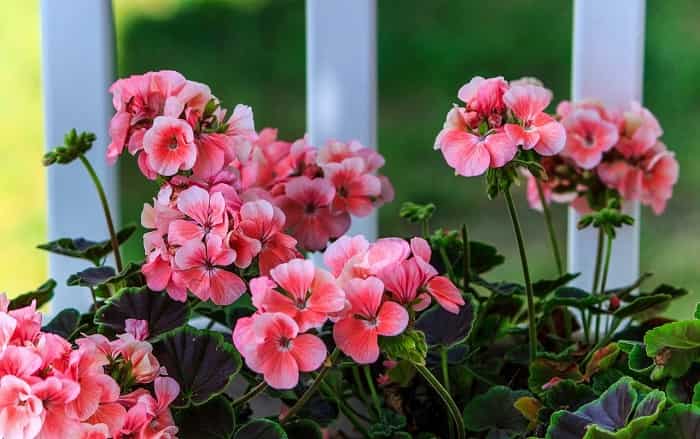
Fertilizers with calcium help to form ovaries. Eggshells can be used instead of store-bought preparations, but they need to be collected and prepared in advance. A comprehensive approach also involves the use of preparations with sulfur, iron, magnesium, calcium and potassium permanganate. Among the most popular fertilizers for geraniums, Pokon concentrates are among the most popular.
Seasonal fertilizing of geraniums
When thinking about what to feed geraniums for abundant flowering, it is worth considering the seasonality of fertilizers and their availability.
In the spring
Having completed sanitary pruning, gardeners feed geraniums with nitrogen-containing fertilizers. Complex compositions are applied twice a month. It would not be superfluous to treat with a composition containing iodine during this period.
Feeding by month:
- March. Ammophoska, azophoska 5 gram (0.2 oz) per 1 liter (1.4 oz) of water.
- April. Nitrogen-containing fertilizers at 7 grams (0.3 oz) per 1 liter (1.4 oz) of water.
- May. Potassium superphosphate. Dosage 5 grams (0.2 oz) per 1 liter (1.4 oz).
In summer
This is a period of active budding and growth, which means that fertilizers need to be applied more often. Vigorous flowering can be achieved by regular fertilizing once every 10 days. Scheme by month:
- June – potassium superphosphate at a dosage of 5 grams (0.2 oz) per 1 liter (1.4 oz) of water.
- July. Potassium phosphate and nitrogen-containing fertilizers.
- August. Iodine with peroxide – for laying flower buds for the next season.
In autumn and winter
When the plant has finished flowering, the fertilizer dosage is reduced to the minimum limits. This is necessary so that the flower can prepare for the dormant phase. With the onset of autumn, the soil is fertilized twice, making an interval of 40 days between procedures. Fertilizers by month:
- September – October. Superphosphate is added once a month.
- From November to February inclusive. The rest period, when active feeding is not required.
Timing and dosage
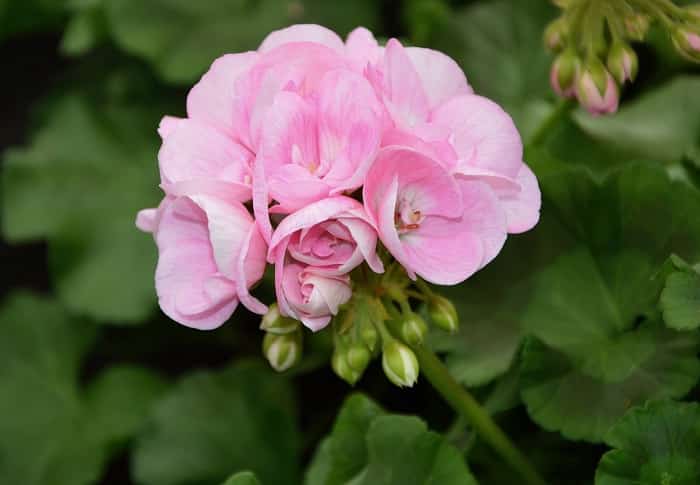
Top dressing is divided into regular and urgent. We have described the former above. The latter is needed by the plant when growth and development problems are detected. Mineral fertilizers are applied twice a month, organic ones – once every 2 years. When the plant is in a dormant state, the dosage and frequency of top dressing are reduced.
Proper and consistent care will prolong the life of the flower, which will become a worthy decoration of the room or summer cottage.










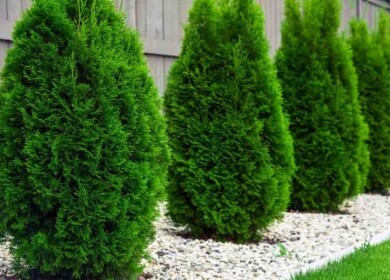
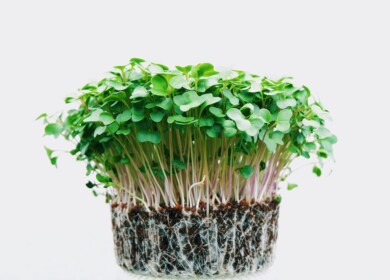

Discussion0 comments